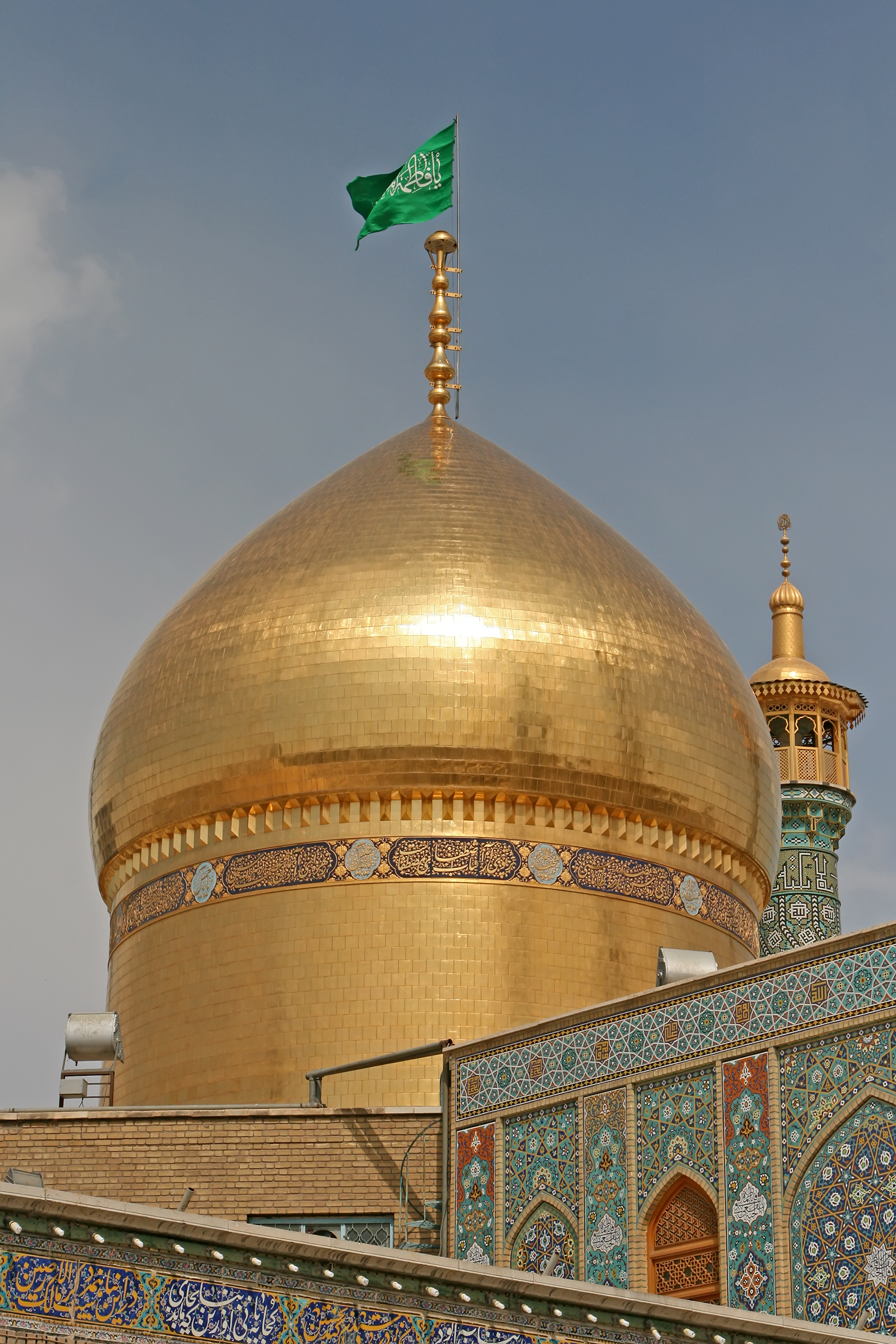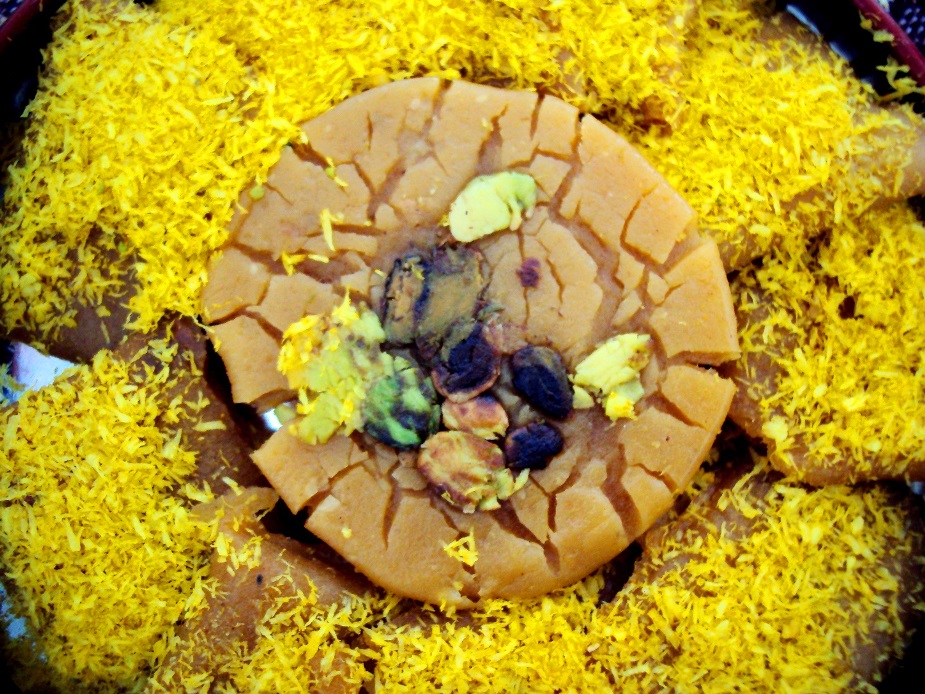|
Qom
Qom (also spelled as "Ghom", "Ghum", or "Qum") ( fa, قم ) is the seventh largest metropolis and also the seventh largest city in Iran. Qom is the capital of Qom Province. It is located to the south of Tehran. At the 2016 census, its population was 1,201,158. It is situated on the banks of the Qom River. Qom is considered holy in Shi'a Islam, as it is the site of the shrine of Fatimah bint Musa, sister of Imam Ali ibn Musa Rida (Persian: ''Imam Reza''; 789–816). The city is the largest center for Shi'a scholarship in the world, and is a significant destination of pilgrimage, with around twenty million pilgrims visiting the city every year, the majority being Iranians but also other Shi'a Muslims from all around the world. Qom is also famous for a Persian brittle toffee known as ''sohan'' (Persian: ), considered a souvenir of the city and sold by 2,000 to 2,500 "sohan" shops. Qom has developed into a lively industrial center owing in part to its proximity to Tehran. It ... [...More Info...] [...Related Items...] OR: [Wikipedia] [Google] [Baidu] |
Fatima Masumeh Shrine
The Shrine of Fatima Masumeh ( fa, حرم فاطمه معصومه translit. ''haram-e fateme-ye masumeh'') is located in Qom, which is considered by Shia Muslims to be the second most sacred city in Iran after Mashhad. Fatima Masumeh was the sister of the eighth Imam Reza and the daughter of the seventh Imam Musa al-Kadhim (Tabari 60). In Shia Islam, women are often revered as saints if they are close relatives to one of the Twelver Imams. Fatima Masumeh is therefore honored as a saint, and her shrine in Qom is considered one of the most significant Shi'i shrines in Iran. Every year, thousands of Shi'i Muslims travel to Qom to honor Fatima Masumeh and ask her for blessings. Also buried within the shrine are three daughters of the ninth Twelver Shī‘ah Imām Muhammad al-Taqī. Specifications The mosque consists of a burial chamber, three courtyards and three large prayer halls, totalling an area of . The three prayer halls are named: ''Tabātabā'ī'', ''Bālā Sar'', and ' ... [...More Info...] [...Related Items...] OR: [Wikipedia] [Google] [Baidu] |
Fatimah Bint Musa
Fatima bint Musa ( ar, فَاطِمَة بِنْت مُوسَىٰ, '; born 1st Dhu al-Qadah 173 AH – 10th or 12th of Rabi' al-Thani 201 AH; approximately March 22, 790 AD – November 7 or 9, 816 AD), commonly known as Fatima al-Ma'suma ( ar, فَاطِمَة ٱلْمَعْصُومَة, ') was the daughter of the seventh Twelver Shia Imam, Musa al-Kazim and sister of the eighth Twelver Shia Imams, Ali al-Rida. Every year, millions of Shia Muslims travel to Qom to honor Fatima al-Ma'suma at her shrine. Fatima al-Ma'suma is the eldest daughter of Musa al-Kazim, whom the Shi'ites consider to be the holiest child of Musa al-Kazim after her brother Ali al-Rida. Fatima al-Ma'suma has been highly praised in the narrations and speeches of four Shi'ite Imams, so much so that Ja'far al-Sadiq, the sixth Imam of Shi'ites in two narrations, Ali al-Rida, the eighth Imam of Shi'ites in five narrations And Muhammad al-Jawad, the ninth Imam of the Shi'ites, has emphasized in a narration t ... [...More Info...] [...Related Items...] OR: [Wikipedia] [Google] [Baidu] |
Jamkaran
Jamkaran ( fa, جمکران '; also Romanized as ' and '), also known as Jamgarân ( fa, جمگران, link=no), Jam-e-Karân ( fa, جم کران, link=no) is a village in Qanavat Rural District, in the Central District of Qom County, Qom Province, Iran. At the 2006 census, its population was 8,368, in 1,747 families. Jamkaran is located on the outskirts of Qom, and is the site of the Jamkaran Mosque, a popular pilgrimage site for Shia Muslims from all over the world. Shia belief has it that the Mahdi—the Twelfth Shia Imam, a figure from Shia eschatology Islamic eschatology ( ar, علم آخر الزمان في الإسلام, ) is a field of study in Islam concerning future events that would happen in the end times. It is primarily based on hypothesis and speculations based on sources from t ... who will lead the world to an era of universal peace—once appeared and offered prayers at Jamkaran. On Tuesday evenings large crowds of thousands gather at Jamkaran to pray ... [...More Info...] [...Related Items...] OR: [Wikipedia] [Google] [Baidu] |
List Of Iran Cities By Population
IR IRAN has one of the highest urban population growth rates in the world. From 1950 to 2002, the urban proportion of the population increased from 27% to 60%. The United Nations predicts that by 2030 80% of the population will live in urban areas."Islamic Azad University" retrieved 28 Jan 2008 Most internal migrants have settled near the cities of , , |
Sarajeh, Qom
Sarajeh ( fa, سراجه, also Romanized as Sarājeh) is a village in Qanavat Rural District, in the Central District of Qom County, Qom Province, Iran Iran, officially the Islamic Republic of Iran, and also called Persia, is a country located in Western Asia. It is bordered by Iraq and Turkey to the west, by Azerbaijan and Armenia to the northwest, by the Caspian Sea and Turkmeni .... At the 2006 census, its population was 369, in 89 families. Notable people * Mohammad Hossein Fahmideh, a war hero of Iran References Populated places in Qom Province {{Qom-geo-stub ... [...More Info...] [...Related Items...] OR: [Wikipedia] [Google] [Baidu] |
Qom (River)
The Qom River or Qom Roud ( fa, رودخانه قمرود) is a large river in Iran that receives its water from the Zagros Mountains and mounds into the Namak Lake. The Qom River flows through the city of Qom, and together with the Qareh Su it gains a length of approximately . The water level strongly fluctuates between 312 m³/s and only 4 m³/s. This is partially the effect of taking water for irrigation. In 2014, the World Resources Institute The World Resources Institute (WRI) is a global research non-profit organization established in 1982 with funding from the MacArthur Foundation under the leadership of James Gustave Speth. WRI's activities are focused on seven areas: food, fore ... ranked the Qom basin as "extremely high" for water stress. References Landforms of Qom Province Rivers of Qom Province {{Iran-river-stub ... [...More Info...] [...Related Items...] OR: [Wikipedia] [Google] [Baidu] |
Central District (Qom County)
The Central District of Qom County ( fa, بخش مرکزی شهرستان قم) is a district in Qom County, Qom Province, Iran. At the 2006 census, its population was 988,462, in 248,913 families. The District has two cities: Qom and Qanavat. The District contains two rural districts: Qomrud Rural District and Qanavat Rural District Qanavat Rural District ( fa, دهستان قنوات) is a rural district (''dehestan'') in the Central District of Qom County, Qom Province, Iran. At the 2006 census, its population was 16,658, in 3,657 families. The rural district has 18 vill ... References Districts of Qom Province Qom County {{Qom-geo-stub ... [...More Info...] [...Related Items...] OR: [Wikipedia] [Google] [Baidu] |
Sohan (confectionery)
Sohan ( fa, سوهان, sohān) is a traditional Persian saffron brittle toffee made in Iran. Its ingredients consist of wheat sprout, flour, egg yolks, rose water, sugar, butter or vegetable oil, saffron, cardamom, and slivers of almond and pistachio. Sohan is originated in Qom, Iran.There are different types of Sohan including Honey Sohan, Sesame Sohan, Sohan Halwa, Almond Sohan, Sohan Gazi, Sohan Loghmeh, Butter Sohan, Sohan Pashmaki (cotton candy) and Dessert Sohan. Some people believe that when Mozaffar ad-Din Shah Qajar travelled to Qom and he was entertained with Halwa Qomi, he analogized it to a rasp (Sohan is the Persian word meaning rasp or file) which digested the food he had eaten very well. See also * Sohan papdi * Shekarpareh * Sohan halwa * Sohan asali * Peanut brittle * Florentine biscuit A Florentine biscuit (or simply, a Florentine) is a sweet pastry of nuts and fruit. Florentines are made of nuts (typically hazelnuts and almonds) and candied cherries mi ... [...More Info...] [...Related Items...] OR: [Wikipedia] [Google] [Baidu] |
Provinces Of Iran
Iran is subdivided into thirty-one provinces ( fa, استان ''ostân''), each governed from a local centre, usually the largest local city, which is called the capital (Persian: , '' markaz'') of that province. The provincial authority is headed by a governor-general (Persian: ''ostândâr''), who is appointed by the Minister of the Interior subject to approval of the cabinet. Modern history Iran has held its modern territory since the Treaty of Paris in 1857. From 1906 until 1950, Iran was divided into twelve provinces: Ardalan, Azerbaijan, Baluchestan, Fars, Gilan, Araq-e Ajam, Khorasan, Khuzestan, Kerman, Larestan, Lorestan, and Mazandaran. In 1950, Iran was reorganized to form ten numbered provinces with subordinate governorates: Gilan; Mazandaran; East Azerbaijan; West Azerbaijan; Kermanshah; Khuzestan; Fars; Kerman; Khorasan; Isfahan. Iran has had a historical claim to Bahrain as its 14th province: Bahrain Province, until 1971 under British colonial o ... [...More Info...] [...Related Items...] OR: [Wikipedia] [Google] [Baidu] |
Shia Islam
Shīʿa Islam or Shīʿīsm is the second-largest branch of Islam. It holds that the Islamic prophet Muhammad designated ʿAlī ibn Abī Ṭālib as his successor (''khalīfa'') and the Imam (spiritual and political leader) after him, most notably at the event of Ghadir Khumm, but was prevented from succeeding Muhammad as the leader of the Muslims as a result of the choice made by some of Muhammad's other companions (''ṣaḥāba'') at Saqifah. This view primarily contrasts with that of Sunnī Islam, whose adherents believe that Muhammad did not appoint a successor before his death and consider Abū Bakr, who was appointed caliph by a group of senior Muslims at Saqifah, to be the first rightful (''rāshidūn'') caliph after Muhammad. Adherents of Shīʿa Islam are called Shīʿa Muslims, Shīʿītes, or simply Shīʿa or Shia. Shīʿa Islam is based on a ''ḥadīth'' report concerning Muhammad's pronouncement at Ghadir Khumm.Esposito, John. "What Everyone Nee ... [...More Info...] [...Related Items...] OR: [Wikipedia] [Google] [Baidu] |
Shia
Shīʿa Islam or Shīʿīsm is the second-largest Islamic schools and branches, branch of Islam. It holds that the Prophets and messengers in Islam, Islamic prophet Muhammad in Islam, Muhammad designated Ali, ʿAlī ibn Abī Ṭālib as his Succession to Muhammad, successor (''khalīfa'') and the Imamah (Shia doctrine), Imam (spiritual and political leader) after him, most notably at the event of Ghadir Khumm, but was prevented from succeeding Muhammad as the leader of the Muslims as a result of the choice made by some of Companions of the Prophet, Muhammad's other companions (''ṣaḥāba'') at Saqifah. This view primarily contrasts with that of Sunni Islam, Sunnī Islam, whose adherents believe that Muhammad did not appoint a successor before Death of Muhammad, his death and consider Abu Bakr, Abū Bakr, who was appointed caliph by a group of senior Muslims at Saqifah, to be the first Rashidun, rightful (''rāshidūn'') caliph after Muhammad. Adherents of Shīʿa Islam are c ... [...More Info...] [...Related Items...] OR: [Wikipedia] [Google] [Baidu] |
Marja'
Marji ( ar, مرجع, transliteration: ''marjiʿ''; plural: ''marājiʿ''), literally meaning "source to follow" or "religious reference", is a title given to the highest level of Twelver Shia authority, a Grand Ayatollah with the authority given by a hawzah to make legal decisions within the confines of Islamic law for followers and lower-ranking clerics. The highest ranking ''marjiʿ'' is known as the ''marja al-mutlaq'' or ''marja al-taqlid al-mutlaq''. Sources differ as to when the institution of the marja˓ emerged, with Murtadha al-Ansari (d. 1864) and Muhammad ibn Ya'qub al-Kulayni (d. 940 or 941 CE) both being called the first marja'. Title Currently, maraji' are accorded the title ''Grand Ayatollah'' ( ar, آية الله العظمی ''ʾĀyatullāh al-ʿUẓmā''). Previously, the titles of Allamah (such as Allameh Tabatabaei, Allameh Majlesi, Allameh Hilli) and Imam (such as Imam Khomeini, Imam Rohani, Imam Shirazi and Imam Sadr) have also been used. Someo ... [...More Info...] [...Related Items...] OR: [Wikipedia] [Google] [Baidu] |






.png)